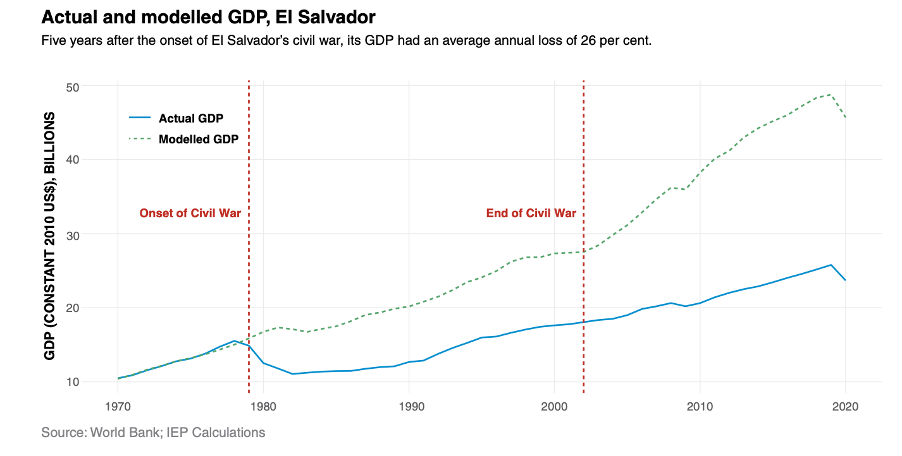Peace is more than just the absence of war, it’s an economic advantage. The Business and Peace Report 2024 by the Institute for Economics & Peace (IEP) reveals that preventing conflict could unlock immense economic gains across countries and sectors. Using synthetic modelling, the report shows how nations affected by prolonged violence could have achieved far stronger outcomes in GDP, trade, and investment had hostilities been avoided. As global instability continues to strain economies, this analysis highlights a crucial truth: peace fuels prosperity, while conflict drains it.
It also notes that if global violence were reduced by just 10%, around $1.75 trillion could be redirected every year into more productive economic activities, social development, and investment. As global instability continues to strain economies, this analysis highlights: peace fuels prosperity, while conflict drains it.
The following analysis delves into the global economic cost of violence, models the potential gains from avoiding conflict, and examines the broader implications for business, investment, and development.
Conflict and violence continue to weigh heavily on the world economy. According to IEP estimates, violence cost the global economy $17.5 trillion in 2023, around 12.9% of global GDP, or roughly $2,200 per person. This figure captures not only the direct impact of conflict and crime but also the expenses involved in preventing, containing, and responding to violence, including the maintenance of international security structures.

The Institute for Economics & Peace (IEP) used synthetic control techniques to compare actual economic indicators with projections in a hypothetical no-conflict scenario. The analysis covered eight countries that experienced conflicts lasting at least four years between 1970 and 2022. Key indicators measured five years after the onset of conflict included GDP, trade (imports and exports), foreign direct investment (FDI), capital formation, and household consumption. On average, the modelling reveals that:
Collectively, these indicators highlight the scale of economic opportunity lost due to protracted conflict.
While outcomes vary by country, the trend consistently shows economic underperformance following conflict:
The average loss in total trade volume was 28%, with exports generally more affected than imports, as demand for essential goods persisted despite conflict.

The loss of business dynamism is not merely a matter of macroeconomic aggregates. Declines in new business formation, domestic credit, and investment confidence were observed, as war heightened uncertainty, risk, and disruption to entrepreneurship and innovation.
Countries that avoided conflict would have experienced stronger GDP growth, better trade outcomes, higher capital investment, and more robust household consumption, suggesting a virtuous cycle in peaceful societies.
This modelling highlights not only the immediate economic costs of conflict but also the immense opportunities for business and development presented by peace. Sectoral impacts are particularly acute in industry and agriculture, where business growth, capital formation, and export potential are highly sensitive to instability.

This evidence provides a compelling economic case for peace as a strategic pathway to prosperity, especially for policymakers, investors, and business leaders evaluating long-term growth and development trajectories.
The analysis clearly demonstrates that the economic costs of conflict extend far beyond immediate destruction, affecting trade, investment, consumption, and long-term development. By modelling hypothetical no-conflict scenarios, the Institute for Economics & Peace reveals the substantial opportunities lost when hostilities persist. Countries that maintained peace would have enjoyed stronger GDP growth, healthier trade balances, greater foreign investment, and more robust household consumption, creating a virtuous cycle of economic prosperity.
These findings provide a compelling case for viewing peace not merely as a social or political ideal, but as a strategic economic asset. For policymakers, investors, and business leaders, prioritising stability and conflict prevention emerges as a critical pathway to sustainable growth, development, and shared prosperity.